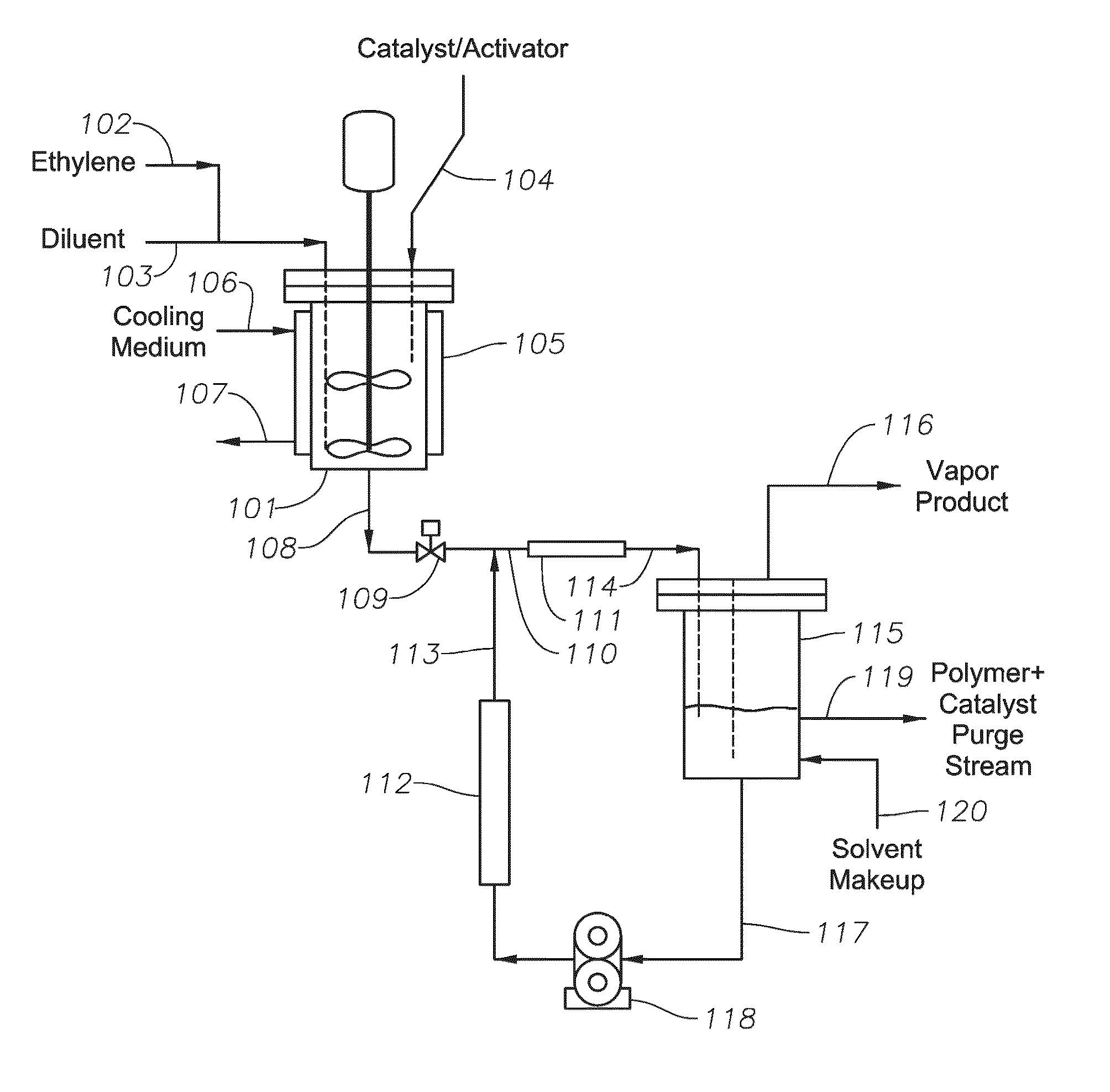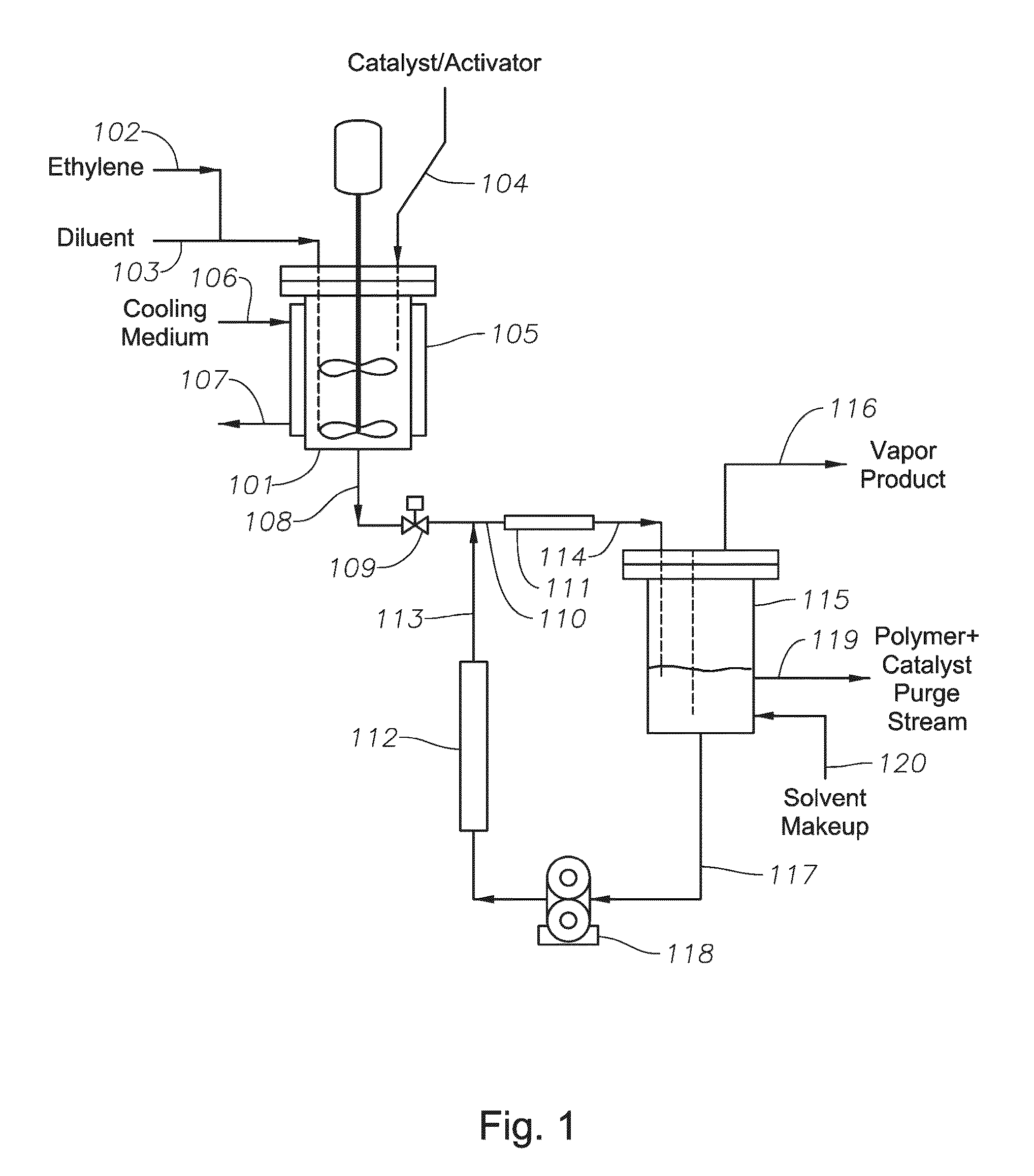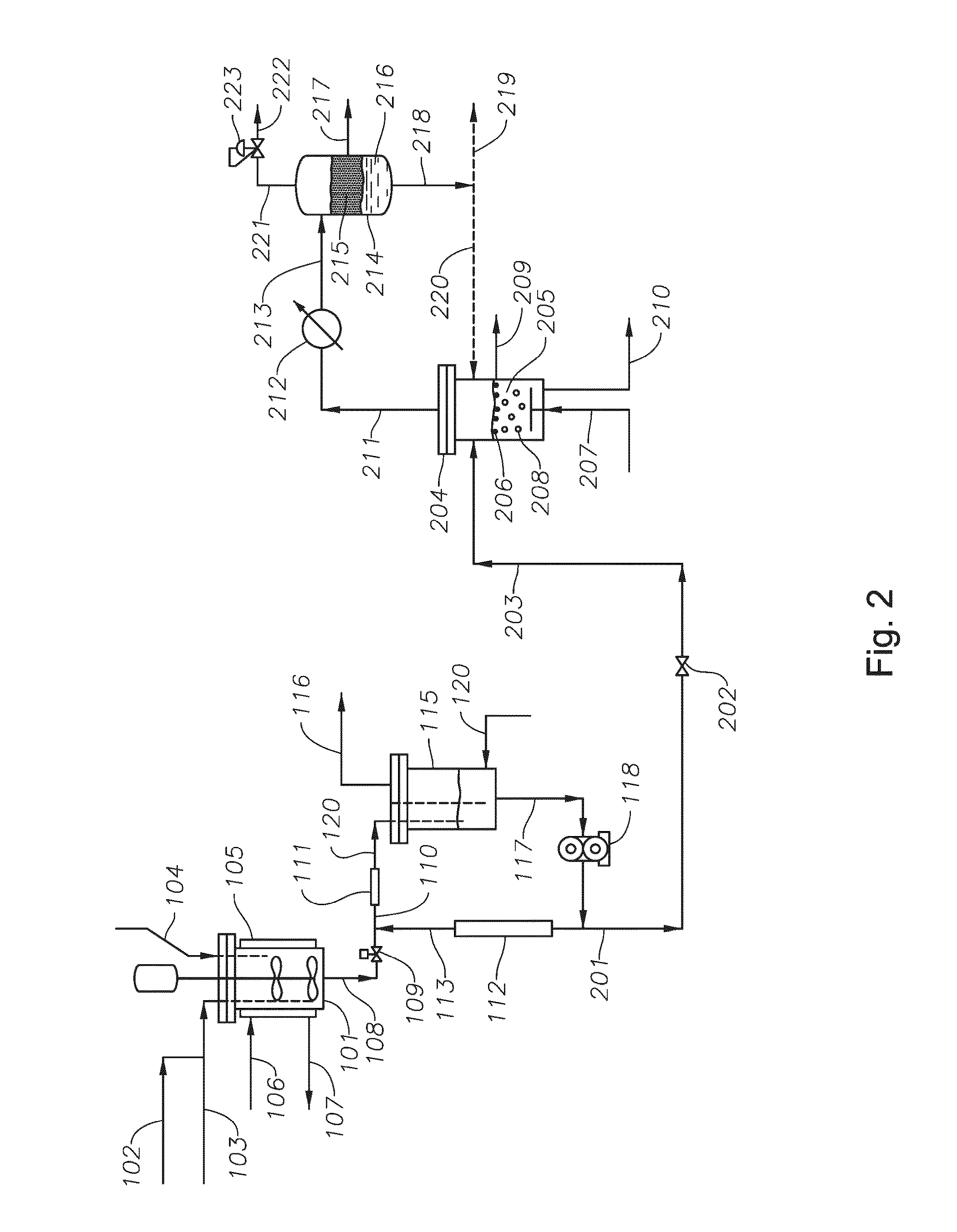System and Method for Selective Trimerization
a trimerization and selective technology, applied in the direction of catalyst activation/preparation, metal/metal-oxide/metal-hydroxide catalyst, hydrocarbon preparation catalyst, etc., can solve the problems of cumbersome prior art methods for separating polymer by-products from the effluent of the trimerization reactor, high excess alcohol requirements, and high cost of alcohol excess requirements
- Summary
- Abstract
- Description
- Claims
- Application Information
AI Technical Summary
Benefits of technology
Problems solved by technology
Method used
Image
Examples
example 1
[0116]Using the apparatus and process flow configuration of FIG. 1, ethylene is converted to 1-hexene using isopentane as a reaction diluent and Isopar G as the recirculating heat transfer solvent. The catalyst system employed is a chromium-based catalyst with a modified methyl alumoxane activator. Run conditions for this example are set forth in Table 1.
TABLE 1Run Conditions - Ethylene to 1-HexeneReactor Temperature (° F.) / (° C.)150 / 66 Reactor Pressure (psig) / (kPa) 230 / 1586Diluent Flow (lb / hr) / (kg / hr)4.5 / 4.5Residence Time (hr) 2Run Duration (hr)11Catalyst Concentration 1.4 × 10−5 / 3.70 × 10−4(mol / gal) / (mol / l)Fraction 1-Hexene in Reactor Effluent0.25 / 0.25(lb / lb) / (kg / kg)Flash Separator Temperature (° F.) / (° C.)305 / 152Heater Temperature (° F.) / (° C.)340 / 171Flash Separator Pressure 80 / 552(psig) / (kPa)Average Collection Rate7.5 / 3.4of Flash Vapor(lb / hr) / (kg / hr)Fraction Polyethylene in0 / 0Flash Vapor(lb / lb) / (kg / kg)Fraction 1-Hexene in0.22 / 0.22Flash Vapor(lb / lb) / (kg / kg)
[0117]It should be note...
embodiment 1
[0120]A process for oligomerizing ethylene to alpha-olefin product, said process comprising:[0121]A) oligomerizing ethylene in a diluent using a catalyst to produce a liquid reactor effluent comprising alpha-olefin product, polymeric by-products, catalyst material, and reaction diluents;[0122]B) contacting said reactor effluent with a solvent at pressure and temperature conditions suitable to vaporize a major portion of said alpha-olefin product but not suitable to vaporize a major portion of said polymeric by-products and said catalyst material to form a combined solvent effluent;[0123]C) separating said combined solvent effluent into a vapor phase comprising a major portion of said alpha-olefin product and a liquid phase comprising a major portion of said polymeric by-products and said catalyst material and a major portion of said solvent;[0124]D) recirculating a first portion of said liquid phase and contacting the reactor in effluent as set forth in Step B; and[0125]E) purging a...
embodiment 2
[0126]The process of embodiment 1, wherein the alpha-olefin product is 1-hexene.
PUM
| Property | Measurement | Unit |
|---|---|---|
| boiling point | aaaaa | aaaaa |
| pressure | aaaaa | aaaaa |
| temperature | aaaaa | aaaaa |
Abstract
Description
Claims
Application Information
 Login to View More
Login to View More - R&D
- Intellectual Property
- Life Sciences
- Materials
- Tech Scout
- Unparalleled Data Quality
- Higher Quality Content
- 60% Fewer Hallucinations
Browse by: Latest US Patents, China's latest patents, Technical Efficacy Thesaurus, Application Domain, Technology Topic, Popular Technical Reports.
© 2025 PatSnap. All rights reserved.Legal|Privacy policy|Modern Slavery Act Transparency Statement|Sitemap|About US| Contact US: help@patsnap.com



